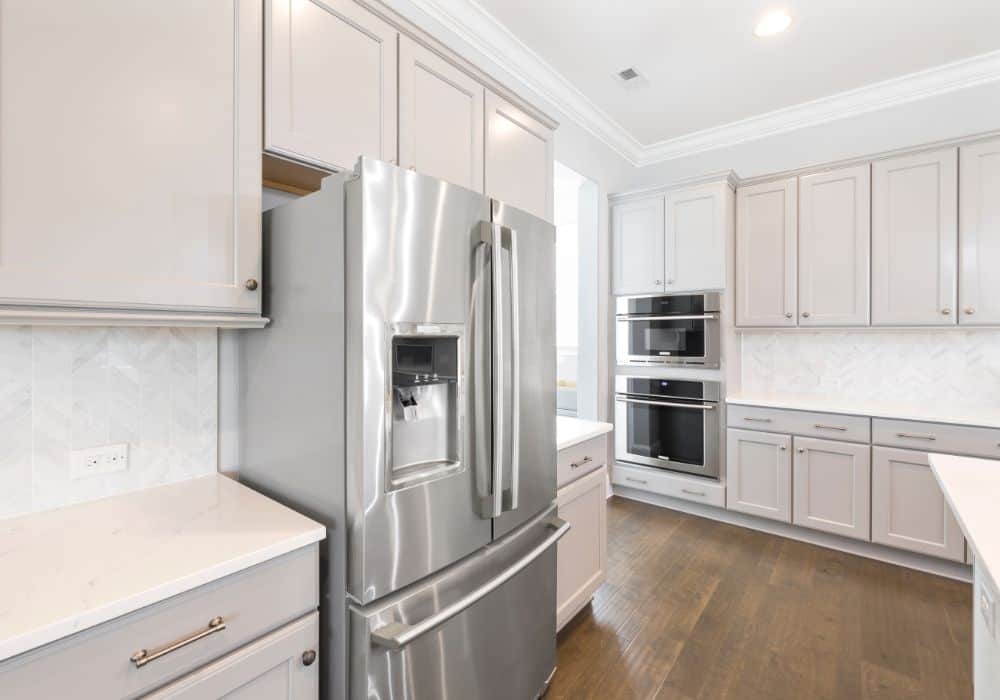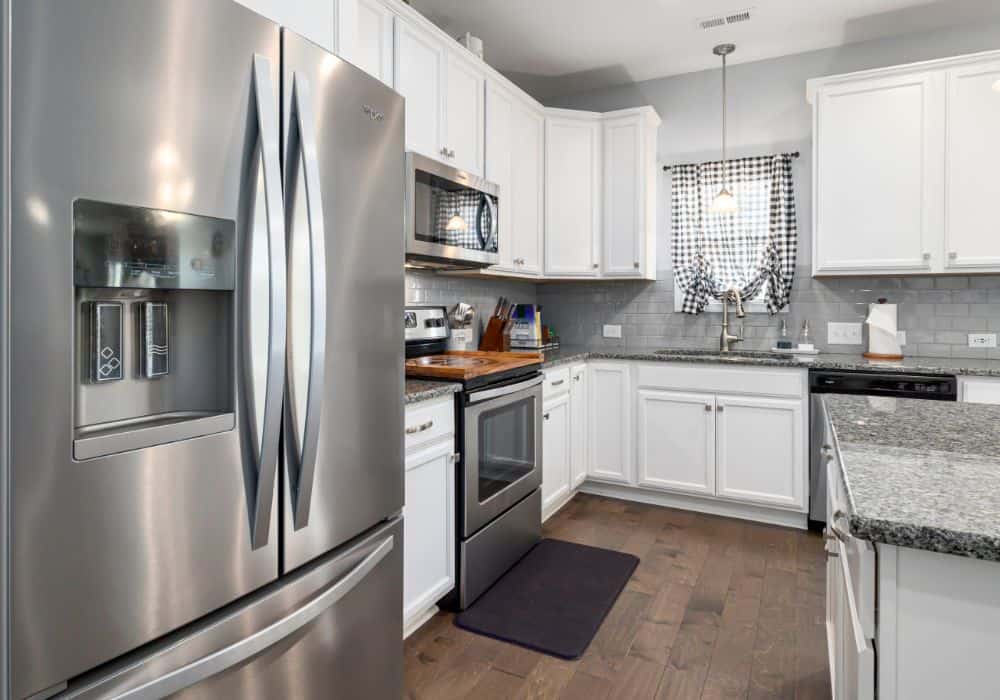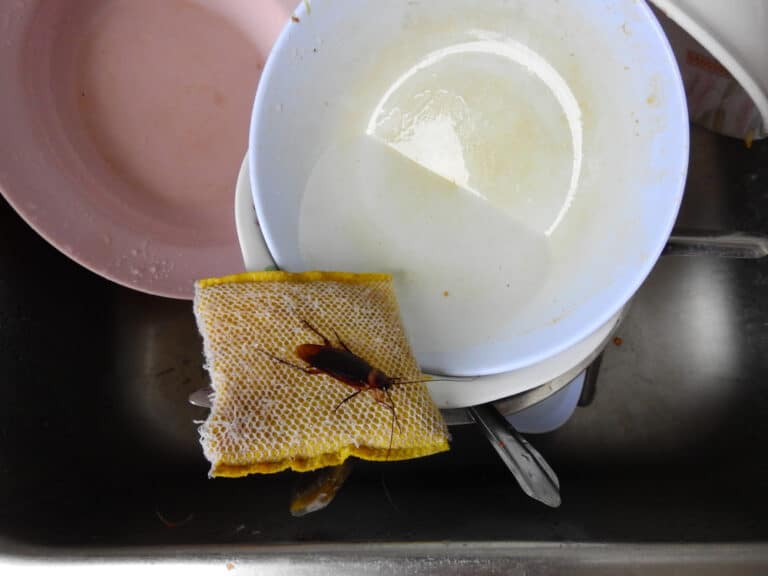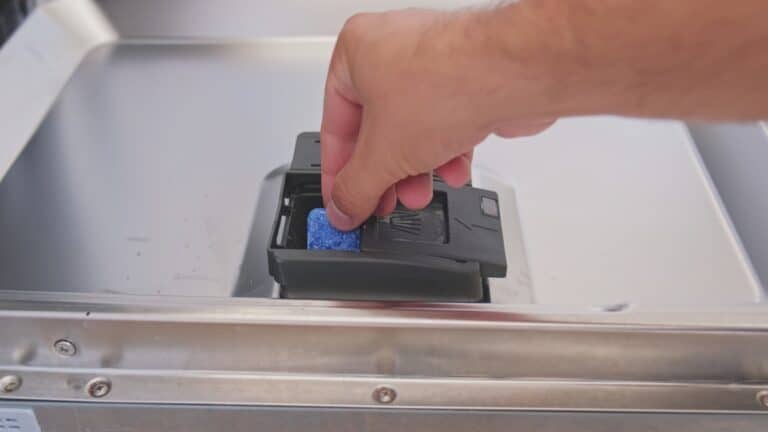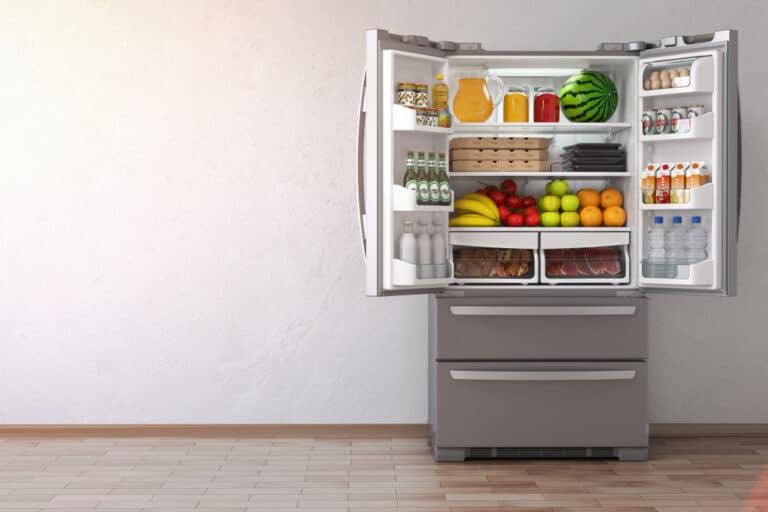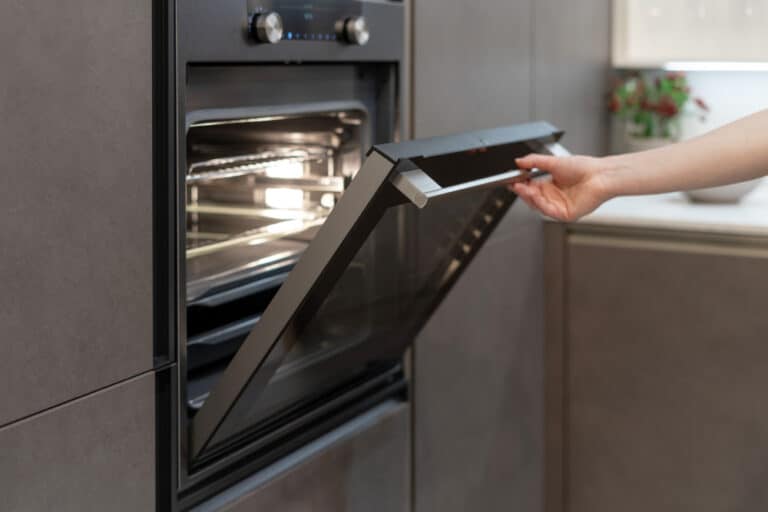Is your latest Kenmore Elite french door refrigerator not cooling properly? Is the water dripping down the compartment walls when there should have been ice? If yes, don’t worry because you aren’t the only one to face it.
Kenmore Elite French Door refrigerators are exquisite – both in style and functionality. They come with the latest features that include smart device compatibility and internal cameras. However, they aren’t flaw-proof.
The most common issue in them is cooling. And when the refrigerator door stops cooling, we all know what comes next. Food spoilage!
Fortunately, there’s no need to stress about this issue anymore. We have compiled a detailed list of causes behind the Kenmore Elite french refrigerator not cooling. This will help you identify the actual problem and resolve it to prevent further troubles. Let’s dive in!
Common Causes For Kenmore Elite French Door Refrigerator Not Cooling
1. Freon Leakage
Freon is the non-combustible gas used to cool the refrigerator. But, initially, it’s present in liquid form.
The liquid is stored under pressure in small tubes. When the pressure is released, the Freon liquid converts into gas. The evaporation causes the cool gas to lower the temperature and keep the food fresh.
Next, the gas is turned back into a liquid with the help of a compressor. The process repeats again to maintain a constant cool temperature.
If the small Freon-containing tubes are damaged, the gas will leak and reduce the cooling performance. The only solution for this is to replace the tubes.
Bonus Tip: Kenmore refrigerators come with a minimum of 5-year sealant warranty. Use it to save up on replacement purchase costs!
In other cases, Freon will leak because of an overflowing drain pan. To fix this, disconnect the power supply of the refrigerator and remove the contents inside.
Now, remove the drain pan by tilting the refrigerator forward. This will reveal the screws holding the drain pan together. Unscrew, remove the pan, and empty it.
2. Dirty Condenser Coils
Condenser coils refer to those long black wires present under or behind the refrigerator. Their purpose is to dissipate the heat as the coolant passes. It’s why the coils are often hot to the touch.
However, if these coils aren’t maintained, dirt and debris build up on them over time. The dirty coils are unable to remove the heat at the same pace as before. This reduced efficiency causes the appliance to work hard to cool.
If the condenser coils get too dirty, the refrigerator will stop cooling completely. This can further lead to a failed compressor. So, examine the condenser coils immediately and clean them to resolve the problem.
3. Evaporator Fan Motor
The evaporator fan is responsible for pulling air through the evaporator coils. This removes the heat from the circulating air and keeps the temperature the same in all areas of the refrigerator.
Most modern refrigerators have two evaporator fan motors. One is located in the freezer compartment, and the other is in the fridge. In the Kenmore Elite french door refrigerator, you will find one evaporator fan motor at the very top of the fridge section.
Examine it to see if it’s working properly. To do so, disconnect the power source of the appliance and turn the motor blade by hand. If it’s hard to turn or make creaking sounds, there’s something broken inside. You will need to replace it.
If the blades aren’t turning at all (even when the fridge is turned on), you need to check the electric current supply. Take a multimeter and put its probes on the respective leads of the fan windings. No continuity means the component requires replacement.
In some cases, the evaporator fan motor in the freezer section is the problem. It might have become too frosted for the blades inside to work properly. Consequently, it will keep the freezer cold but won’t pass the coldness to the fridge. You will use the same methods discussed above to check its functionality.
4. Condenser Fan Motor
Many people confuse evaporator fans with condenser fans. To clarify, the evaporator fan helps remove the heat from the air inside the refrigerator. Meanwhile, the condenser fan helps remove the heat from the refrigerant that passes through the condenser coils.
Since both are dealing with heat removal, a defective condenser fan motor can also be behind no cooling. You will check it manually by turning the fan blades with your hand. Make sure the refrigerator is turned off first.
The blades should move freely without any obstruction. But if they are hard to turn, check for dirt buildups. Clean them using a microfiber cloth. You should also conduct a multimeter test to ensure there is no underlying issue.
5. Start Relay
A start relay is a small component that starts the compressor. It also creates a slight humming noise. So, if it becomes faulty, the compressor won’t run, and there will be no cooling in the refrigerator. You will also not hear the usual humming sound.
There are two ways to check whether it needs replacement. The first is to sniff for a burnt odor from the start relay. Second, use a multimeter to check for electric continuity. If there is a burnt smell and no continuity, replace the component.
6. Temperature-Control Thermostat
The temperature thermostat is exactly what it sounds like. It helps maintain the refrigerator temperature by directing the voltage to the evaporator fan motor, condenser fan motor, and compressor.
If it stops working, all the other linked components will stop working too. This will seize the cooling functionality of the refrigerator. So, inspect the thermostat for any defects.
You will do it by rotating the thermostat knob from the lowest to the highest setting in one smooth movement. Do not pause your hand at random settings. When you do this, the thermostat should give out a loud click.
If there’s no clicking sound, there is some issue. Use a multimeter to rule out the possibility of low current flow. You will need to replace it if there’s no continuity for any setting.
7. Defrost Heater
The defrost heater melts the frost that gathers on the evaporator coils. If it’s defective, you will notice a thick layer of ice on the coils. Consequently, the temperature won’t regulate properly inside the refrigerator.
Using a multimeter is another way to ensure the defrost heater is broken. If the heater shows a negative continuity, it needs to be replaced.
8. Thermistor
A thermistor is a type of resistor that fluctuates resistance with temperature. It’s typically used to detect the changes in the fridge’s temperature and send the readings to the temperature control board. So, if a thermistor becomes defective, it will affect the performance of the control board (which will then affect the fans and compressor).
To check its functionality, locate its position in the internal assembly and put the probes of the multimeter on its terminals. Its resistance should vary with the fridge temperature. If it doesn’t, it has become faulty.
9. Compressor
We’ve already discussed the role of the compressor in a fridge. It is what compresses the refrigerant and pumps it to the condenser and evaporator coils. Without it, there will be no cold air in the fridge to keep things fresh.
Although this is rarely the problem, a failed compressor could be the reason why your Kenmore fridge isn’t cooling. It should also be noted that Kenmore has faced a class action lawsuit against failed compressors.
The previous models of Kenmore Elite refrigerators reportedly contained defective compressors that failed within the first few years of use. It’s why the models were recalled and replaced by new versions.
There are 3 ways to check whether the compressor is faulty. These include:
- Disconnect the appliance from the power outlet. Remove the back panel to access the compressor. If it has no power, it’s defective.
- Use a multimeter to check the electrical continuity between pins and wires on the compressor.
- Inspect the compressor for an open circuit.
You’ll need to contact a technician for the required repairs. Or, you can simply get a replacement.
10. Main Control Board
If you’ve checked all the components above, the Kenmore Elite french door refrigerator is not cooling because of the main control board. This is a big issue and may cause several components to fail together.
What To Do Next?
Up till now, we have discussed all the possible causes and solutions of why the Kenmore Elite french door refrigerator is not cooling. To recap, there can be an issue in:
- Freon supply
- Condenser coils
- Evaporator fan motor
- Condenser fan motor
- Start relay
- Temperature control thermostat
- Defrost Heater
- Thermistor
- Compressor
- Main Control Board
The majority of them will require a replacement. In that case, it’s highly recommended to reach out to Kenmore’s customer support. They will guide you through the correct procedure.
You can also inquire about the replacement parts warranty. But if you don’t want to do DIY, call a refrigerator expert for the installation of the new parts.
We hope this article has resolved all your queries. If you still have any questions, let us know in the comments below!

